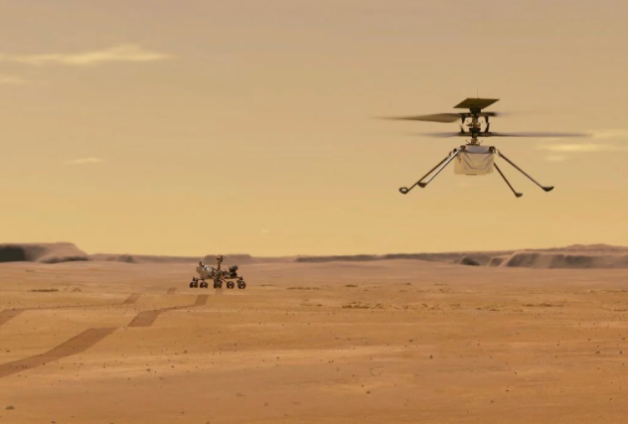NASA has marked a major milestone in its extraterrestrial exploration program, with the first powered flight of an aircraft on Mars.
The flight occurred very early this morning, and NASA received telemetry confirming that the ‘Ingenuity’ helicopter it sent to Mars with its Perseverance rover.
This is a major achievement, in no small part because the atmosphere is so thin on Mars that creating a rotor-powered craft like Ingenuity that can actually use it to produce lift is a huge challenge.
This first flight of Ingenuity was an autonomous remote flight, with crews on Earth controlling it just by sending commands through at the appropriate times to signal when it should begin and end its 40-second trip through the Martian ‘air.’
While that might seem like a really short trip, it provides immense value in terms of the data collected by the helicopter during the flight. Ingenuity actually has a much more powerful processor on board than even the Perseverance rover itself, and that’s because it intends to gather massive amounts of data about what happens during its flight test so that it can transmit that to the rover, which then leapfrogs the information back to Earth.
As mentioned, this is the first ever flight of a powered vehicle on Mars, so while there’s been lots of modelling and simulation work predicting how it would go, no one knew for sure what would happen before this live test.
Ingenuity has to rotate its rotor at a super-fast 2,500 RPM, for instance, compared to around 400 to 500 RPM for a helicopter on Earth, because of how thin the atmosphere is on Mars, which produced significant technical challenges.
What’s the point of even flying a helicopter on Mars? There are a few important potential applications, but the first is that it sets up future exploration missions, making it possible for NASA to use aerial vehicles for future science on the red planet. It can explore things like caves and peaks that rovers can’t reach, for instance.
Eventually, NASA is also hoping to see if there’s potential for use of aerial vehicles in future human exploration of Mars, too — martian explorers would benefit significantly from being able to use aircraft as well as ground vehicles when we eventually get there.
Now, NASA will work on unpacking the data to glean more insights from the flight, and get back more photos and video of the helicopter during its ascent, hover and landing.
Following this flight, it’ll plan additional flight testing attempts based on remaining power and other parameters now that it knows Ingenuity can fly and did as intended.
Latest Stories
-
Bleached babies: Dr. Titus Beyuo demands crackdown on child skin bleaching
14 minutes -
Lawyer urges Ken Ofori-Atta to submit to OSP investigation amid public concern
14 minutes -
Bleached children may have brain challenge, other health complications – Dr Titus Beyuo
17 minutes -
Bleached Babies: Dr. Titus Beyuo shares how his son faced school discrimination over skin color
21 minutes -
Newage and Afrika Nyornu: Creating a period-friendly world for girls
33 minutes -
Bleached Babies: Western beauty ideals driving mental health concerns in Ghana – Dr Titus Beyuo
34 minutes -
Bleached Babies: parents who bleach their children are criminally culpable – CDD-Ghana
37 minutes -
GTEC issues “final warning” on misuse of honorary academic titles
40 minutes -
Ghana Horticulture Expo 2025 to empower youth and women through agribusiness
43 minutes -
Ghana must recognise child nutrition as a fundamental right, not a privilege – Dr Charity Binka
48 minutes -
Wontumi withdraws High Court application to review his bail conditions
54 minutes -
I’d rather lose the GPL title than lives – Dr. Kwame Kyei
54 minutes -
Sparta Prague sign Ghanaian defender Ivan Anokye Mensah
59 minutes -
Ghana’s real household spending to hit GH¢129.7bn in 2025 – Fitch Solutions
1 hour -
Ban on drumming, noise-making: GPCC raises concern over harassment – Calls for stakeholder dialogue
1 hour

